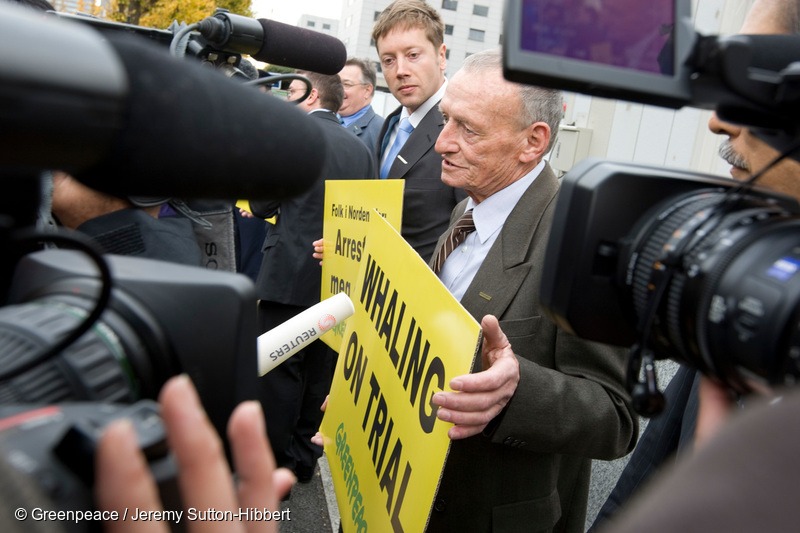Australians love their whales. They might be surprised to know that this is not just the season when Japan’s whaling fleet goes to the Southern Ocean, it is also the whale watching season around Japan.
Australia’s last whaling Captain, Paddy Hart, went to Tokyo a few weeks ago, to try to convince Japanese people that there is life after whaling.
» Read this great interview with Paddy

Paddy Hart, a former whaling ship captain and harpooner, is interviewed by reporters and cameramen as he joins Greenpeace in support of the two Greenpeace activists, Junichi Sato and Toru Suzuki, who face trial for their activities in the Greenpeace anti-whaling campaign. Hart holds a sign that reads ‘Whaling on Trial’.
In the 14 years he spent whaling off the coast of Albany, West Australia, Paddy was killing whales for their oil, not for food. The blubber from the huge sperm whales was boiled down and used as specialised lubricating oil for motors.
Paddy visited the famous Tsukiji fish market, where he saw whale ‘meat’ being sold for human consumption for the first time in his life.
Just as viable replacements were found for uses of whale oil, Paddy brought the message to Japan that there is life after whaling.
Paddy joined Greenpeace executive heads from around the world to protest in defence of the Tokyo Two, two Greenpeace activists arrested and charged after exposing embezzlement within the whaling industry.
Japanese people were very surprised by Paddy’s visit, because they had no idea we used to kill whales in this country. It is only thirty years ago that Paddy stopped and it is only a matter of time before Japan stops too.
Japanese people often first learn about their government’s whaling policy when they travel overseas and are asked about it.
Paddy dragged the whaling controversy back into news. Some people like to think that the Japanese feverishly support the slaughter, but this just is not true. Whaling is not widely supported nor a regular media issue. Paddy’s visit shows that making human connections and telling the story of whale protection is the way to go.

